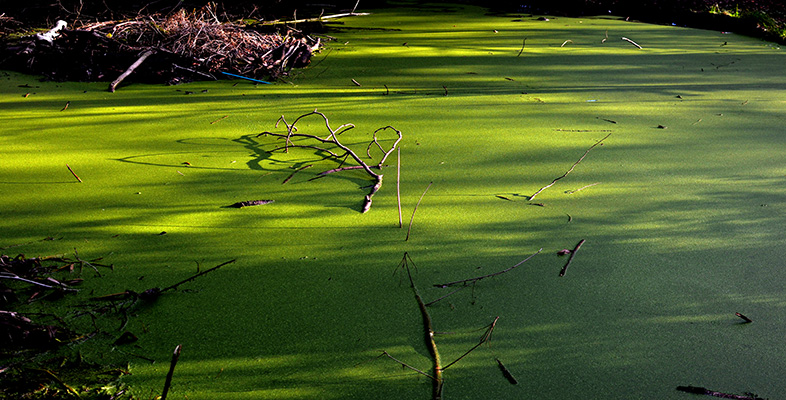2.1.2 Algal blooms
The enrichment of water bodies by eutrophication may be followed by population explosions or ‘blooms’ of planktonic organisms.
SAQ 10
Bursts of primary production in an aquatic ecosystem in response to an increased nutrient supply are commonly referred to as ‘algal blooms’. Can you explain why this term is taxonomically incorrect?
Answer
The organisms responsible may be either algae or bacteria, or a mixture of the two. It is incorrect to refer to bacteria as algae as they belong to a completely different taxonomic kingdom.
‘Algal blooms’ are a well-publicized problem associated with increased nutrient levels in surface waters. The higher the concentration of nutrients, the greater the primary production that can be supported. Opportunistic species like some algae are able to respond quickly, showing rapid increases in biomass. Decomposition of these algae by aerobic bacteria depletes oxygen levels, often very quickly. This can deprive fish and other aquatic organisms of their oxygen supply and cause high levels of mortality, resulting in systems with low diversity. The odours associated with algal decay taint the water and may make drinking water unpalatable. Species of cyanobacteria that flourish in nutrient-rich waters can produce powerful toxins that are a health hazard to animals. Such problems are well documented for a number of famous lakes. The Zurichsee in Switzerland has been subject to seasonal blooms of the cyanobacterium Oscillatoria rubescens due to increased sewage discharge from new building developments on its shores. For lakes in Wisconsin, USA, ‘nuisance’ blooms of algae or bacteria occur whenever concentrations of phosphate and nitrate rise.
